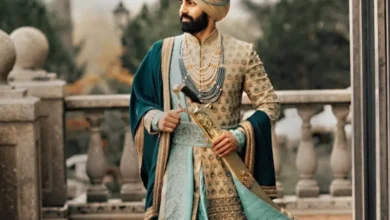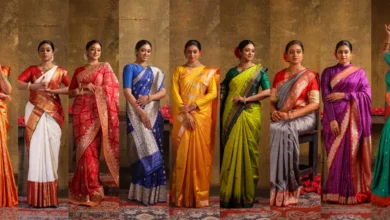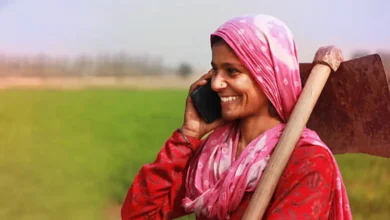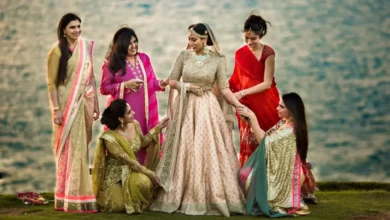India is a country rich in cultural diversity, and traditional clothing plays a pivotal role in reflecting this heritage. Among the myriad garments that represent the traditions of India, the dhoti holds a special place.
Simple yet elegant, this attire has transcended centuries, adapting to changing times while maintaining its unique identity. This article delves deep into the history, cultural significance, and modern adaptations of the dhoti.
The dhoti is a traditional garment for men, typically made from a rectangular piece of cloth, usually cotton, that is wrapped around the waist and legs. Unlike stitched clothing, the dhoti relies on skilled draping techniques to achieve its form, making it both versatile and sustainable.
The Origins of the Dhoti
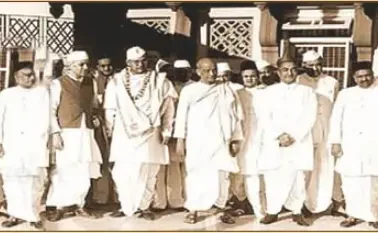
Historical Roots
The origins of the dhoti trace back over 4,000 years, making it one of the oldest garments in the world. Ancient texts like the Rig Veda mention garments resembling the dhoti, indicating its integral role in Indian civilization.
See also The Timeless Elegance of the Sherwani: Traditional Indian Clothing
The Timeless Elegance of the Sherwani: Traditional Indian ClothingSymbol of Simplicity
In ancient India, the dhoti was not just a piece of clothing but a symbol of simplicity and purity. Its widespread use among people of all social classes made it a unifying garment.
The Cultural Significance of the Dhoti

Religious Connotations
The dhoti holds a sacred status in Hinduism. Priests and devotees often wear it during religious ceremonies, symbolizing humility and devotion.
Symbol of Patriotism
During the Indian independence movement, leaders like Mahatma Gandhi popularized the dhoti as a symbol of self-reliance and resistance to British textiles.
Regional Variations of the Dhoti
India’s diverse culture has led to several regional adaptations of the dhoti:
See also The Iconic Salwar Kameez: A Timeless Symbol of Indian Tradition and Style
The Iconic Salwar Kameez: A Timeless Symbol of Indian Tradition and Style1. Pancha (South India)
- Known as veshti in Tamil Nadu and mundu in Kerala.
- Typically white or cream, often adorned with a gold border.
2. Laacha (Punjab)
- A broader version with pleats, often paired with a kurta.
3. Dhuti (Bengal)
- Features intricate embroidery, paired with kurtas during special occasions.
How to Wear a Dhoti
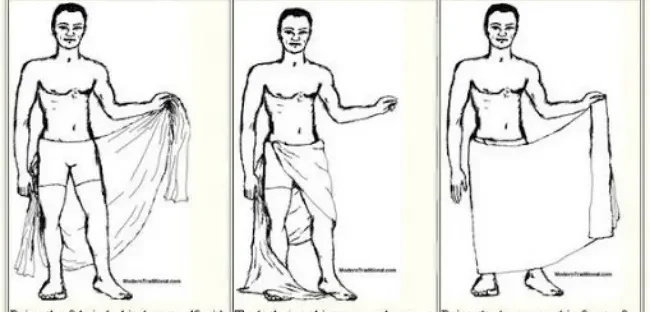
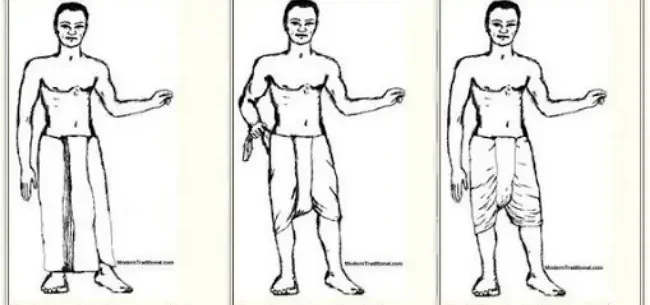
Mastering the art of wearing a dhoti requires practice but is deeply rewarding. Follow these steps:
- Prepare the Cloth
- Choose a dhoti of appropriate length (typically 4-5 meters).
- Drape Around the Waist
- Wrap the fabric around your waist and secure it with a knot.
- Create Pleats
- Fold the remaining cloth into neat pleats and tuck them in at the front.
- Wrap Around the Legs
- Pass the fabric between your legs and tuck it at the back for mobility.
- Adjust and Style
- Ensure comfort while keeping the folds aligned for a polished look.
Dhoti vs. Other Traditional Garments
The dhoti is often compared to other Indian attire like the lungi or kurta-pajama, but each has its unique identity:
| Aspect | Dhoti | Lungi | Kurta-Pajama |
|---|---|---|---|
| Length | Full-length, 4-5 meters | Shorter, 2-3 meters | Full outfit with top and bottom |
| Occasion | Formal and religious | Casual | Semi-formal to formal |
| Draping Style | Folded and pleated | Simple wrap | Stitched and easy to wear |
The Evolution of Dhoti in Modern India
Contemporary Styles
Modern designers have reinvented the dhoti, integrating it with elements of fusion fashion. For example:
- Dhoti pants: A stitched version that combines the comfort of pants with the aesthetic of a dhoti.
- Designer dhotis: Made with silk, satin, or embellished fabrics for weddings and festive occasions.
Bollywood Influence
Indian cinema has played a significant role in keeping the dhoti relevant. Iconic actors have donned this attire in period films and blockbusters, influencing fashion trends.
Sustainability and the Dhoti
The dhoti is inherently sustainable due to its:
- Minimalist Design: Made from a single piece of cloth, reducing fabric waste.
- Natural Fabrics: Often crafted from cotton or silk, biodegradable materials.
- Versatility: Adaptable for various body types and occasions, reducing the need for multiple garments.
Occasions for Wearing a Dhoti
Religious Events
Dhoti is the attire of choice for:
- Pujas and havans.
- Temple visits and spiritual gatherings.
Weddings
Grooms and male relatives often wear silk dhotis paired with kurtas or angavastrams.
Cultural Festivals
During festivals like Diwali, Pongal, or Onam, the dhoti is a mark of tradition and festivity.
Famous Personalities Who Popularized the Dhoti
1. Mahatma Gandhi
The Father of the Nation famously adopted the dhoti to promote simplicity and self-reliance.
2. Rabindranath Tagore
The Nobel laureate poet and philosopher often wore a Bengali-style dhoti, blending elegance with intellectual charm.
The Dhoti Around the World
The simplicity and elegance of the dhoti have inspired fashion globally:
- Yoga and Meditation: The dhoti is often seen in spiritual retreats and yoga centers worldwide.
- Runways and Fashion Shows: International designers incorporate dhoti-inspired drapes into haute couture.
Care and Maintenance of a Dhoti
Proper care ensures the longevity of your dhoti:
- Washing: Use mild detergents and cold water for cotton dhotis. For silk, opt for dry cleaning.
- Storage: Fold neatly and store in a cool, dry place. Avoid direct sunlight to prevent discoloration.
- Ironing: Use a low-heat setting for cotton and a silk-specific mode for silk variants.
Common Myths About the Dhoti
The Dhoti is Only for Older Generations
Modern adaptations have made it appealing to younger audiences.
The Dhoti is Difficult to Wear
With practice, wearing a dhoti can be as quick and easy as tying a shoelace.3. The Dhoti is Outdated
Its presence in weddings, festivals, and modern fashion proves otherwise.
Why the Dhoti Should Make a Comeback
The dhoti is more than just a garment; it’s a statement of cultural pride, sustainability, and timeless elegance. Embracing it not only honors tradition but also promotes an eco-friendly lifestyle. Whether for a formal occasion or a casual outing, the dhoti stands as a testament to India’s rich heritage and adaptability.
Explore the versatility of this iconic attire and let the dhoti redefine your wardrobe with a touch of tradition and modernity.

